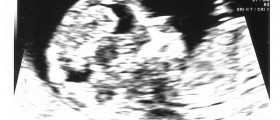
Implantation bleeding is perhaps not quite the right name for the few drops of blood you may notice after an egg has implanted into the uterus. There is blood, but it is so minimal that you can hardly call it a bleeding. That is why some people also refer to implantation bleedings as implantation spotting, which is a more accurate term. Most resources will tell you that implantation bleeding occurs a week to ten days after ovulation, but in reality it varies from woman to woman, and can strike any time during the luteal phase, the time between ovulation and the next expected menstrual period.
The bleeding you might have is light pinkish and mixed with cervical mucus, or dark brown or red in color, due to the fact that it takes a while to travel down from the uterus. You might notice some cramping with an implantation bleeding, but most women do not have any symptoms at all. Because implantation bleedings tend to be extremely low in volume, they do not last very long. If you are not someone who pays regular attention to cervical mucus, you might even miss your implantation bleeding!
Some women do have bleeding that is a little heavier, and implantation can last for up to two days. If the spotting you are experiencing is close to the time you are expecting your period, and it lasts for longer than two days as well as increasing in volume, it is probably safe to say your period has started. During the late stages of your cycle, you can do an early home pregnancy test to determine whether your bleeding is due to menstruation, or if you are pregnant and just had a late implantation bleeding.

















Your thoughts on this
Loading...